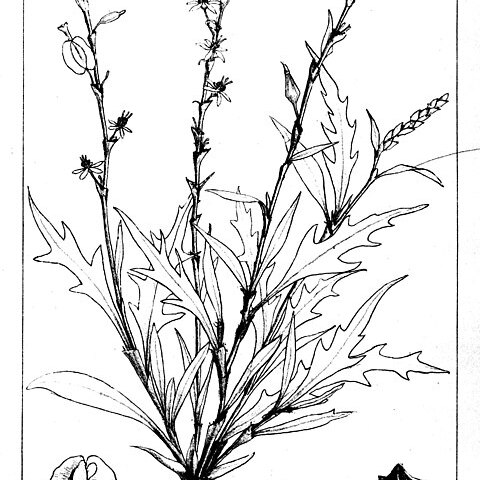Hermaphrodite flowers heterostylous, 4–5-merous; perianth tubular, with relatively short lobes; as the fruit matures the receptacle enlarges and invests the fruit with the withered perianth persisting above it and constricted at the base; stamens 8 in 2 series, the 5 outer stamens adnate to the perianth segments near their bases, the 3 inner with flattened bases forming a contiguous ring around the base of the style; anthers oblong; styles 3; stigmas capitate.
Fruiting receptacle hardened and enclosing the fruit. Nut fusiform, conical, ampulliform or lanceolate-ampulliform, trigonous or not, unarmed or with 3(9) spreading prickles or teeth of varying size and development at the centre or below, or at the base, sometimes winged.
Flowers pedicellate, clustered in axils of bracts, borne in slender or laxly spiciform, terminal or axillary, leafless racemes; bracteoles 2, united; pedicels becoming thicker and sometimes longer as the fruit matures.
Annual or perennial polygamous herbs, more rarely shrubs, glabrous or hairy, sometimes with papillae or scales.
Ocrea membranous or chartaceous, with or without a fringe of setae at the apex.
Male flowers with a short tube and 4–5 petaloid perianth segments.
Leaves alternate, sessile or petiolate, entire or pinnatifid.
